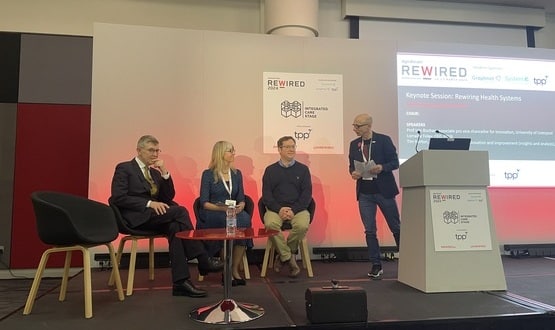How one NHS trust moved to virtual outpatient appointments
- 17 November 2020

Moving 90% of outpatient appointments to telephone and video is making services far easier to access for patients in one of the most deprived parts of England, writes Martin Sadler, CIO at Sandwell and West Birmingham Hospitals NHS Trust.
Many factors impact on people’s health and wellbeing and, as the population served by the trust is one of the most deprived in England, consequently, people within the area can have poorer health outcomes.
For many of our patients, coming into hospital is not always easy due to transport, caring responsibilities, mobility issues and fitting appointments around work.
Far in advance of the coronavirus pandemic, we wanted to address this as a trust, and to respond to specific needs of the patients we serve. We recognised, for example, that it isn’t necessarily a good idea to make an elderly patient catch two buses for an appointment they could have just as effectively from their own home.
So, we set about re-configuring our services in way that would make them more easily accessible. Part of the answer lay in making outpatient appointments virtual via the telephone or a video platform
Shifting appointments
We looked for a video platform – and it quickly became clear there are hundreds of them. But we wanted something that meant no impact for the end user. Something that meant our patients wouldn’t need an app or a specific device, and that all they needed to do was click a link that we sent to them.
The trust decided to use a video collaboration platform from health tech provider Visionable in February 2020. At the time we thought it would be a two-year programme of gradually moving to virtual consultations, to make it easier and more convenient for patients and their clinicians to attend important appointments. Then, at the onset of the Covid-19 pandemic, everything rapidly accelerated, and within just weeks, we transformed how our patients interact with their healthcare professionals.
In just two months the Trust shifted 90% of outpatient appointments away from face to face and to either telephone appointments or using the Visionable platform. And in the four months since initial go-live, nearly 6,000 meetings were held virtually.
Virtual consultations are now delivered across the majority of our services, most notably maternity, diabetes, hand clinic, cardiology, physiotherapy, endocrinology, speech and language therapy, orthotics, paediatrics and oncology – and the impact is expanding. This is something we now intend to maintain permanently.
Security is a key priority, which is why the platform we are using is highly secure. And we have processes in place to check patient identification, just as we would in a physical hospital setting.
Importantly, this is about improving the patient experience. Some people might traditionally not turn up to their appointment, sometimes because they are frightened about coming to hospital. Moving to video should help us to overcome that challenge. In addition, the Trust is continuing to expand the use of the technology to help people in other ways. For the genitourinary medicine clinic, for example, patients may be happier using the virtual service than attending the clinic in person for this discreet service.
Breaking down the geography of care
Our next step is to look at the pathways, so that we can use this opportunity to improve design and deliver enhanced specialist services, such as those from the Birmingham and Midland Eye Centre to patients, wherever they might live.
This project is having a big impact for patients and staff alike. It has been driven by healthcare professionals, with hospital leadership now expecting this as the default means of delivering care.
And though I’m one of the sponsors for this project as the trust’s CIO, the IT team has not been required to lead on the project and has had minimal input beyond enabling network security, providing headsets or webcams when required.
The successful roll out of the system and training has been led by our Patient Access Team who are responsible for the booking of appointments across the Trust. The team are our first point of contact with patients for their appointments and they played a vital role in communicating with patients about this new way of receiving health care. This was a really helpful approach and was able to reassure patients and give them confidence in the new system.
In just weeks, video has become one of our main tools for communication with outpatients. It’s free for patients to use which helps us challenge inequalities in accessing healthcare – particularly for those who are vulnerable and disadvantaged. We’ve been able to reach patients quicker and aim to see a reduction in missed appointments – and more importantly it saves patients’ time and we can look after them in a place of their choosing. You can do most things from home in today’s world – why not your healthcare?
This digital first approach was planned before Covid. And we definitely don’t plan to go back.




